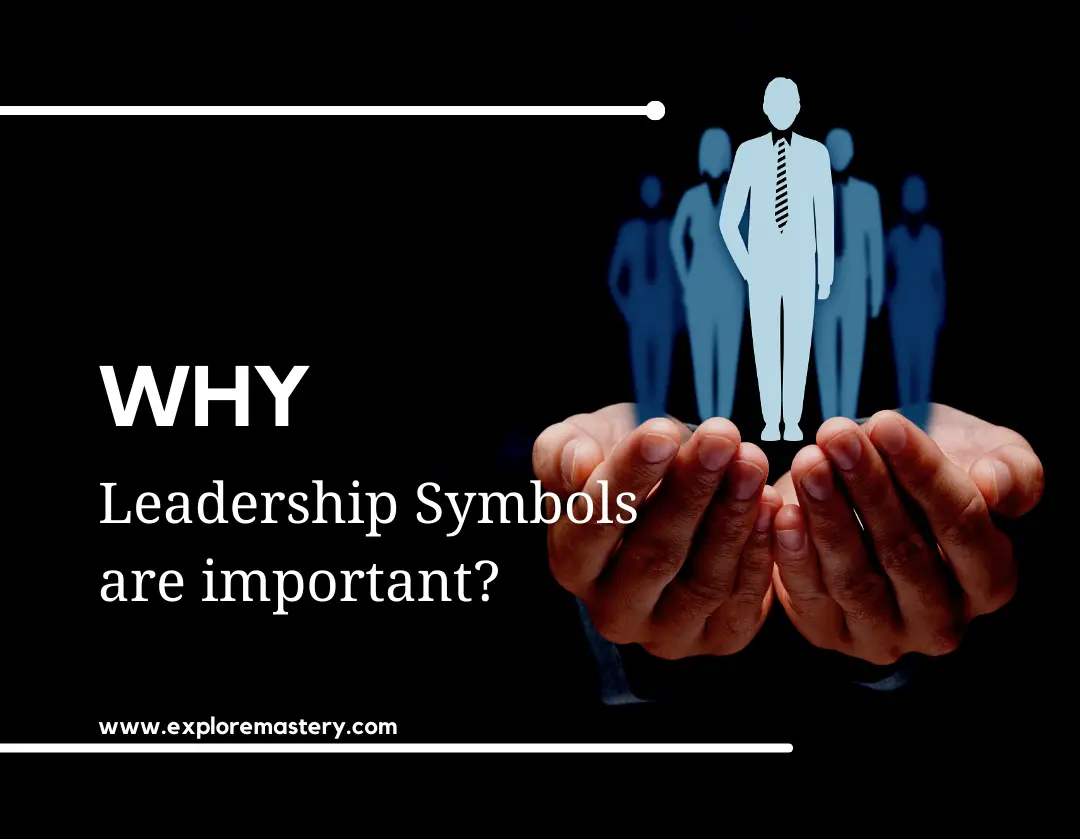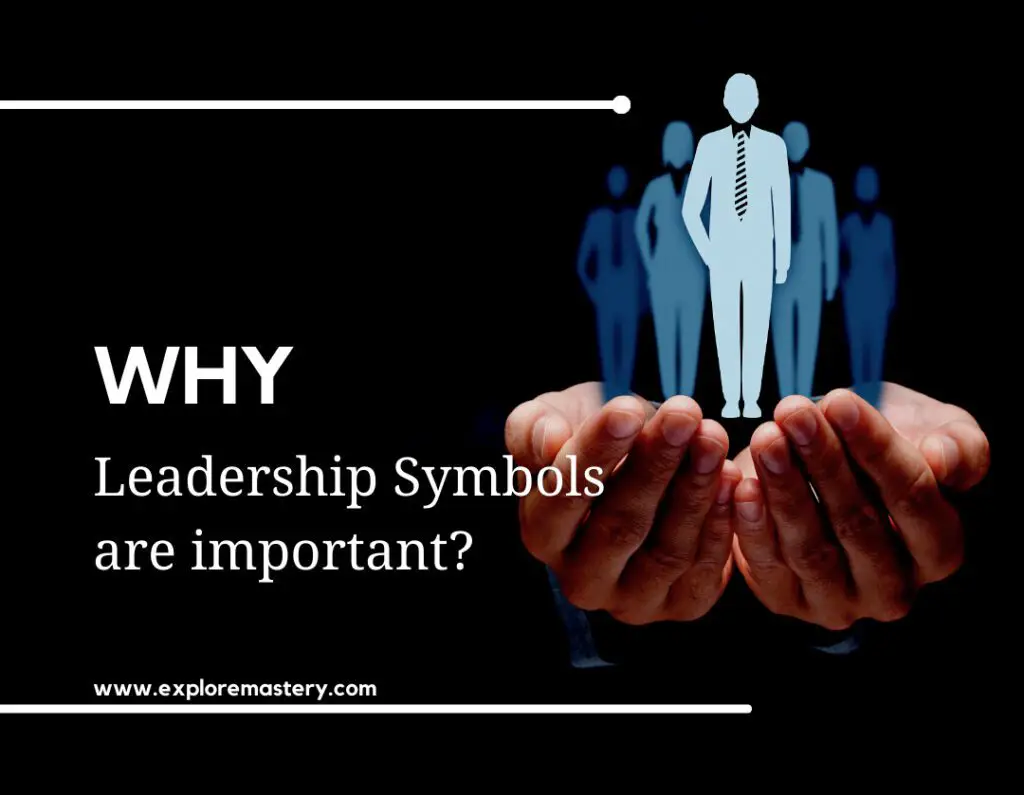Are you an aspiring leader looking to impact the world positively? Or are you a current leader looking for ways to hone and refine your skills? This blog post will explore the characteristics and symbols of effective leadership.

Exploring the Meaning Behind Leadership Symbols
Exploring the Meaning Behind Leadership Symbols is an integral part of understanding the power of symbolic leadership. Symbols are powerful tools that can evoke a sensory experience in team members, inspiring them to follow a desired pattern of behaviour. These symbols can also give a sense of authority, power, and influence and inspire those who follow. Symbols can communicate messages, create order and structure within an organisation, and motivate people. By understanding the meaning behind leadership symbols and how they can be used in various contexts, leaders can better leverage the power of symbols in their leadership roles.
The Meaning of Leadership Symbols
The Meaning of Leadership Symbols is deeply rooted in their power and authority. From crowns and thrones to swords and rifles, these symbols are associated with leaders who can inspire, motivate, and move their followers. Metaphors, analogies, stories, and anecdotes all help bring these symbols to life and help people understand the leader’s vision. By using symbols to illustrate a point or to make a statement about the organisation’s mission, leaders can help their followers to make sense of their message. Symbols of leadership can also differentiate rank and project power, creating a sense of stability and order. In today’s world, management by symbols is becoming more critical as organisations strive for meaning in an ever-changing landscape. By understanding how leaders use symbols and how they impact motivation and performance, leaders can use them effectively to create an influential culture that resonates with their followers.
Symbols of Authority
Symbols of Authority are essential in how leaders establish their power and influence. They can come in many forms, from physical objects such as an amulet, flags or sashes to more abstract symbols such as crowns, thrones and swords. Symbols of authority serve to both legitimise the leader’s position as well as instil fear and awe in followers. Using symbols, leaders can communicate their authority and power to followers, inspiring them to take action and fulfill their responsibilities. Symbols of authority have been used throughout history by leaders who sought to create a sense of unity among their followers. Symbols have a profound effect on leadership, inspiring loyalty and dedication in those who follow.
Symbols of Inspiration
Symbols of Inspiration are powerful tools leaders use to ignite passion, purpose and vision within their followers. Symbols such as the Phoenix, Dragon, Lion Tooth, Thunderbolts, Tabono, Crown, Throne, Sword and Rifle unite and inspire followers. These symbols also represent the intangible qualities of a good leader– communication with passion and purpose, interpretation of experience and hope for the future. Leaders use these symbols to motivate people to act in ways that further the organisation’s mission. By conveying their message through symbols of inspiration, leaders can create a strong sense of unity and purpose in their organisations.
The Power of Leadership Symbols
These symbols do more than establish hierarchy; they also act as a source of inspiration for the people they lead. By displaying symbols that embody leadership qualities, such as courage, strength and wisdom, leaders can foster a sense of shared meaning and commitment among their team members, ultimately increasing effectiveness. Furthermore, symbols can communicate more powerful messages and longer lasting than regular verbal communication. When used effectively, leadership symbols can be a powerful tool in enhancing motivation and cultivating a culture of success.
The Impact of Symbols on Leadership
The Impact of Symbols on Leadership is far-reaching and undeniable. From ancient times to the modern day, symbols have been used to represent strength and authority, inspire commitment and performance, and convey values and culture. Symbols of leadership, such as crowns, thrones, robes, swords, and eagles, are visual reminders of the power of leadership. They provide a tangible representation of the intangible qualities that make a leader great. By understanding the power symbols can have on leadership, organisations can use them to communicate their values and inspire their followers effectively.
Examples of Leadership Symbols
An example of a common symbol of leadership is the sword. Swords are often used as symbols of authority and strength and denote a leader’s power to protect and defend their people. Another example is the crown, which symbolises royalty and the leader’s ultimate control. Robes and thrones are common symbols representing the leader’s importance and status. These symbols are used to reinforce the leader’s authority and to differentiate them from other members of their organisation. The use of symbols by a leader can be more powerful and longer lasting than verbal communication, as it tangibly conveys their beliefs. Understanding the meaning behind leadership symbols can help leaders communicate their message more effectively, motivate their followers, and establish themselves as authorities in their field.
The Benefits of Using Leadership Symbols
The Benefits of Using Leadership Symbols are manifold. By recognising and understanding the power of symbols, leaders can use them to communicate their vision, mission, and values to followers. Signs can help establish authority within an organisation and ensure that the leader’s message is heard and understood. Additionally, symbols can inspire others and provide a sense of meaning, purpose, and motivation. Through symbols, leaders can effectively communicate their message and promote unity among their followers.
Understanding the Impact of Leadership Symbols
Understanding the Impact of Leadership Symbols is critical to understanding how leaders use symbols to influence others. Symbols reinforce a leader’s position of power and authority and provide a means for differentiating between leaders. Clothing, for example, distinguishes between those with power and privilege. Symbols can also reflect an organisation’s culture, values, and character. Examining the nature of leadership and symbolism allows for a better comprehension of the effects a symbol can have on a leader’s effectiveness. Ultimately, the power of leadership symbols lies in their ability to inspire and motivate followers and communicate messages in a powerful and efficient manner.
The Power of Symbols in Leadership
It can convey feelings of power or influence, and with the right combination, it can motivate employees and create a strong sense of shared meaning. Furthermore, research has shown that understanding the impact of leadership symbols can enhance organisational effectiveness. With this knowledge, leaders can use symbols to communicate their message and promote commitment from their team effectively.
The Role of Symbols in Establishing Authority
Symbols are powerful tools that leaders use to convey their values, beliefs and messages to their followers. Authority Symbols help to create a sense of order and respect within an organisation, while symbols of power and influence help motivate and inspire. Symbols of inspiration can encourage people to strive for greater heights while reminding them that their leader is in charge. In addition, symbols can communicate the shared values held by the organisation, creating a unified vision and purpose for everyone involved. By recognising the importance of symbols in leadership, we can better understand their impact on motivating people towards action.
How Leaders Use Symbols to Communicate
Understanding how leaders use symbols to communicate is key to being a successful leader. Symbols are a powerful way for leaders to create an impression of authority and inspire their followers. Leaders can differentiate themselves and project an image of strength and power by using symbols of power and influence, such as crowns, thrones, robes, swords, and rifles. Furthermore, symbolism can motivate followers by creating a sense of unity and inspiring hope. Leaders can also use myths, metaphors, rituals, ceremonies, stories, and symbols to communicate their vision and values effectively. By understanding the impact of leadership symbols and using them wisely, leaders can create lasting impressions that drive behaviour and foster loyalty among their followers.
Examples of Common Leadership Symbols
The power of symbols in leadership is both tangible and intangible. Symbols such as a crown, a throne, a sword, or a rifle can represent power and authority. Other symbols, like the tabono or the lion tooth, are associated with courage and strength. Even symbols like the phoenix or thunderbolt can represent resilience and rebirth. In addition to these physical symbols, leaders can use symbols to capture attention, frame experience, and inspire followers in a common mission. For example, a checkmark symbol can represent success or show that goals have been met. The use of symbols in leadership can be a powerful tool for motivating people towards achieving collective goals.
The Impact of Leadership Symbols on Motivation
The Impact of Leadership Symbols on Motivation is undeniable. Symbolism is a powerful tool for inspiring followers, as it can elicit strong emotional reactions and establish a connection between the leader and their followers. Symbolic leaders are influential when they articulate a vision that is widely accepted and when they can communicate the meaning behind their symbols. By incorporating symbols into their leadership style, leaders can inspire their followers to higher levels of performance and commitment. Symbols can also help to create a unified corporate culture, which can have a long-lasting impact on an organisation’s success. Understanding the impact of leadership symbols and how they can be used effectively is essential for any leader seeking to maximise their impact on their followers.




